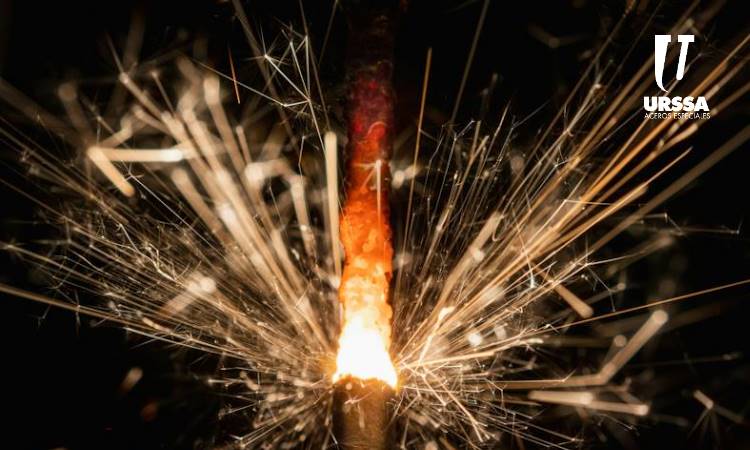
Steel welding
Steel welding is the process by which two pieces of steel are joined together by applying heat or pressure, or a combination of both, thus achieving a permanent joint.
This procedure is essential in a wide variety of industries, including building construction, machinery manufacturing, the automotive industry, the naval industry, among others.
History of Steel Welding
Welding as we know it today began to develop in the 19th century with the industrial revolution. Advances in metallurgy and electricity allowed the creation of more effective and controlled techniques. In 1800, Sir Humphry Davy discovered the electric arc, which led to the creation of arc welding in the 1880s. Later, in the 20th century, methods such as resistance welding and MIG/MAG welding were developed, which have significantly improved the quality and efficiency of the process.
Basic Principles of Welding Steel
Welding steel is based on several fundamental principles. First, the surfaces of the pieces to be joined must be properly prepared, eliminating any contamination that could affect the quality of the weld. Heat or pressure is then applied to melt the material in the contact areas. This heat can come from a variety of sources, such as an electric arc, a gas flame, or a laser. As the molten material cools, it solidifies, creating a solid bond. It is essential to control the temperature and cooling rate to avoid defects such as cracks or deformation.
Steel Welding Techniques
There are several steel welding techniques, each with its specific applications and advantages:
- Arc Welding: Uses an electric arc to generate heat. It is divided into subtypes such as stick manual arc welding (SMAW), gas arc welding (GMAW/MIG), and flux cored arc welding (FCAW).
- TIG (Tungsten Inert Gas) Welding: Uses a non-consumable tungsten electrode and inert gas to protect the weld area from contamination. It is ideal for precise, high-quality welds.
- Resistance Welding: Electric current is applied through the pieces to be welded, generating heat by electrical resistance. Includes methods such as spot welding and seam welding.
- Gas Welding: Uses a flame generated by the combustion of a gas, such as acetylene and oxygen, to melt metal. Although less common today, it is still useful for repairs and field work.
Types of Weldable Steels
Not all steels are equally easy to weld. Types of weldable steels include:
- Carbon Steel: It is the most common type and generally easy to weld, although weldability may decrease with increasing carbon content.
- Stainless Steel: Welds well using specific techniques such as TIG or MIG, but requires additional care to avoid corrosion and cracking.
- Alloy Steel: alloy steels contain elements such as chromium, nickel or molybdenum. Weldability varies depending on the composition, often requiring pre- and post-heating.
- Galvanized Steel: Can be welded, but the zinc coating can produce toxic gases, so adequate ventilation is required.
